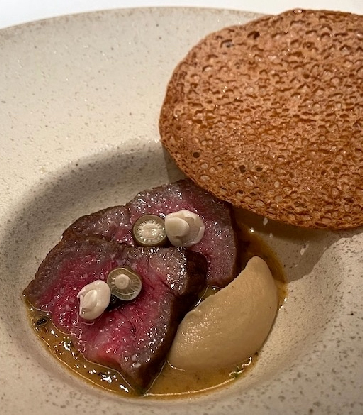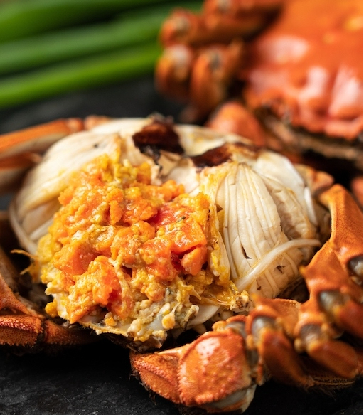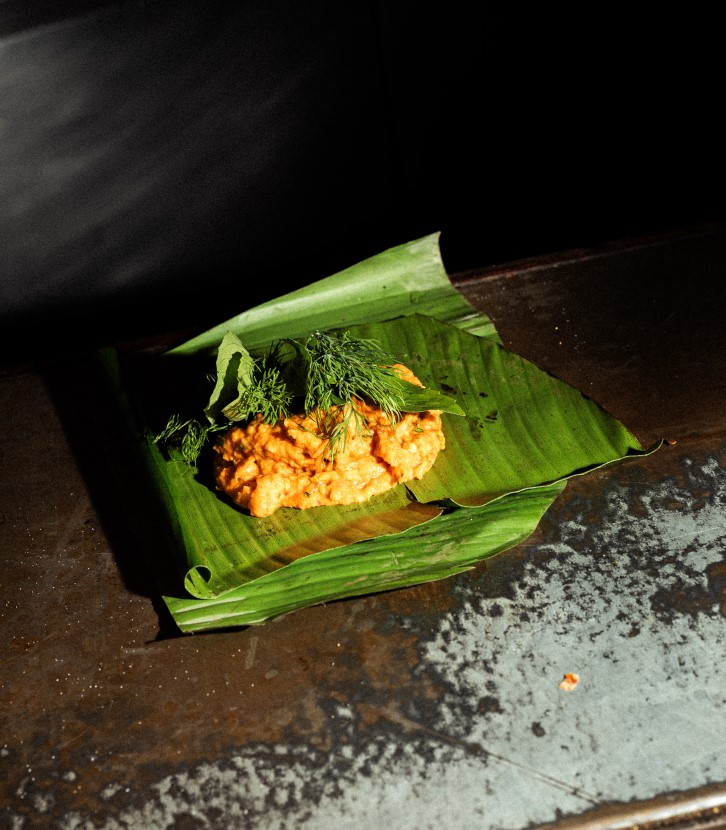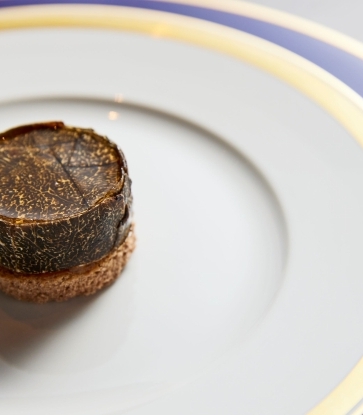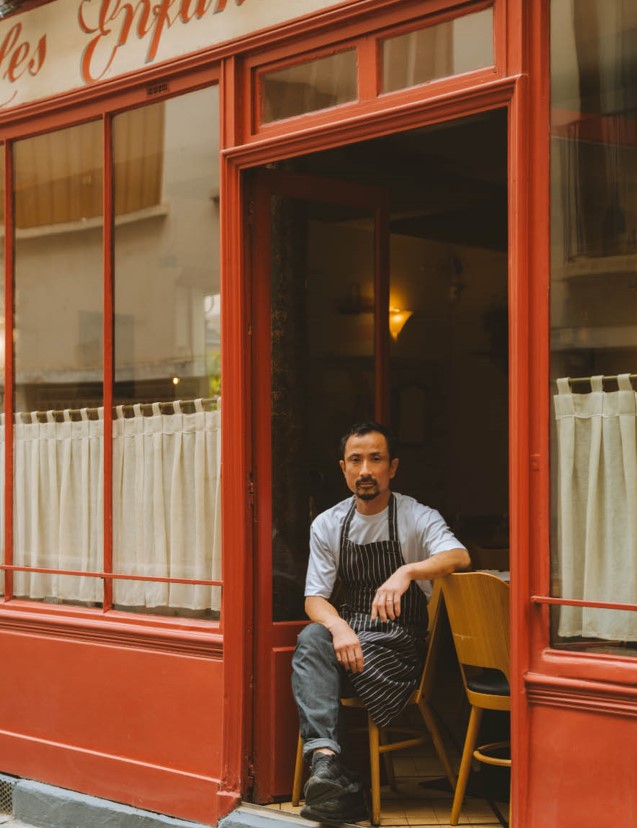MICHELIN-Starred INITA’s famed starter, Italy Meets Japan: the Dorayaki e Tartare, is a dish that gourmands still dream about, no matter how many times they visit.
Perhaps no other dish on INITA’s menu better exemplifies its culinary philosophy of melding the chef’s Japanese heritage, Italian experience, and Taiwanese roots than its signature Dorataki e Tartare — soft Japanese dorayaki pancake, with a filling inspired by a classic dish from northern Italy made with local Taiwanese beef.
This dish began to take shape while Hagimoto was working in Italy where a fellow chef, knowing he was from Japan, often pestered him to teach him how to make Japanese delicacies, including dorayaki. Inspired by his friend’s promptings, Chef Kuni’s Signature Dorayaki was born and grew popular among his colleagues.

At the beginning, he would fill his homemade pancakes with vanilla or pistachio-flavored gelato for his colleagues to taste, or for cooking demonstrations where they would be greeted with enthusiastic reactions. "When I get such compliments, it makes me feel so happy from the inside out, which, in turn, drives me to want to improve," says Hagimoto.
One day, he came across a famous Piedmontese dish from northwest Italy called Vitello Tonnato, a traditional dish of pink veal tartare covered with a creamy tuna mayonnaise, and a finishing touch of capers. He fell in love with its stunning balance of sweet and salty flavors. "It's so delicious!" exclaims the chef, the memory as clear today as when he first tasted it.
Inspired, he began to think: why not create a dorayaki with this Italian element?

As he imagined his own future restaurant, he pictured that this dish that would be the perfect fusion of Japanese culture and the memories of learning how to cook in Italy. He started putting a lot of effort into developing the filling for his dish. When he finally settled down in Taiwan, he made the final tweak, sourcing beef from cattle reared in Yunlin for the tartare.
The three elements of Japan, Italy, and Taiwan fell in place, forming the final dish like a puzzle and making it part of INITA’s soul.
Hagimoto chose to prepare the main protein as a chopped beef tartare, instead of the sliced veal of Vitello Tonnato for two reasons. First, he wanted the entire dish to have a consistently soft and tender texture, from the moist and pillowy dorayaki pancake and silky tuna mayonnaise, to the melt-in-the-mouth filling.
The second reason, as Hagimoto discovered, was the visual appeal of the graduating shades of the beef tartare when the dorayaki is sliced into sections, similar to the red and pink hues of sliced Vitello Tonnato.

A key component of the dish’s deliciousness is the hand-cut beef tartare. Hagimoto insists on fresh beef delivered to the restaurant every day, and using the sharpest blade to cut the meat into consistent pieces by hand — a process that cannot be substituted by machines, which generate heat and affect the freshness of the beef.
Hagimoto’s ingenuity and attention to detail is not only expressed in the ingredients and flavors of the dish, but also in its presentation. Specially chosen are plates from Italian designer Seletti, with painted details that convey both the clashing and blending beauty of Eastern and Western cultures. In a fascinating turn, the plate reveals deeper layers of emotions as each bite of the meal is consumed, an intriguing play on food and art.
Funnily enough, the soft and fluffy Dorayaki e Tartare is also reminiscent of classic cartoon character: Doraemon, a cute and eager-to-please earless cat that loves dorayaki, a joy-inducing reflection of Hagimoto’s cheerful disposition and INITA’s lively dining experience.
All image courtesy of INITA.
This article has been translated by Rachel Tan from its original Chinese version.



